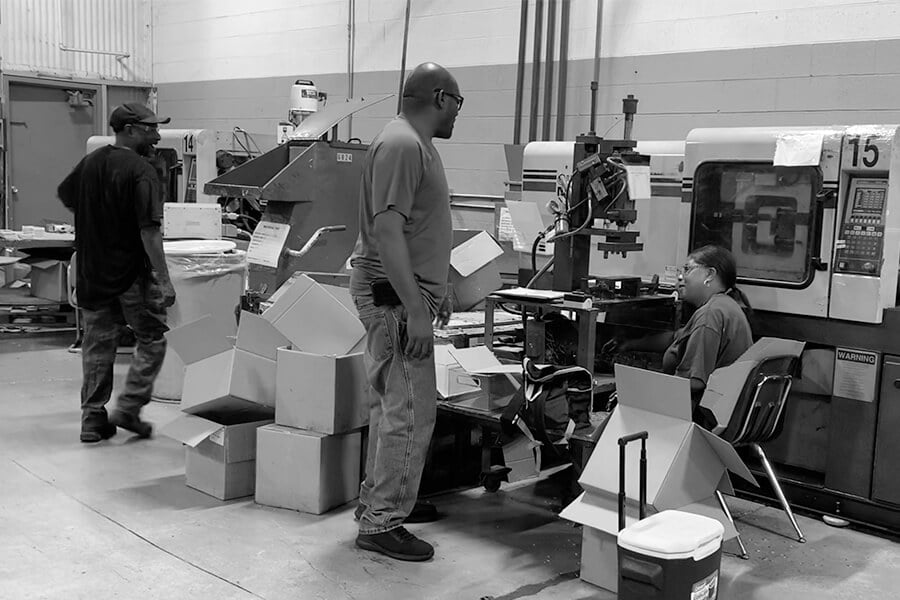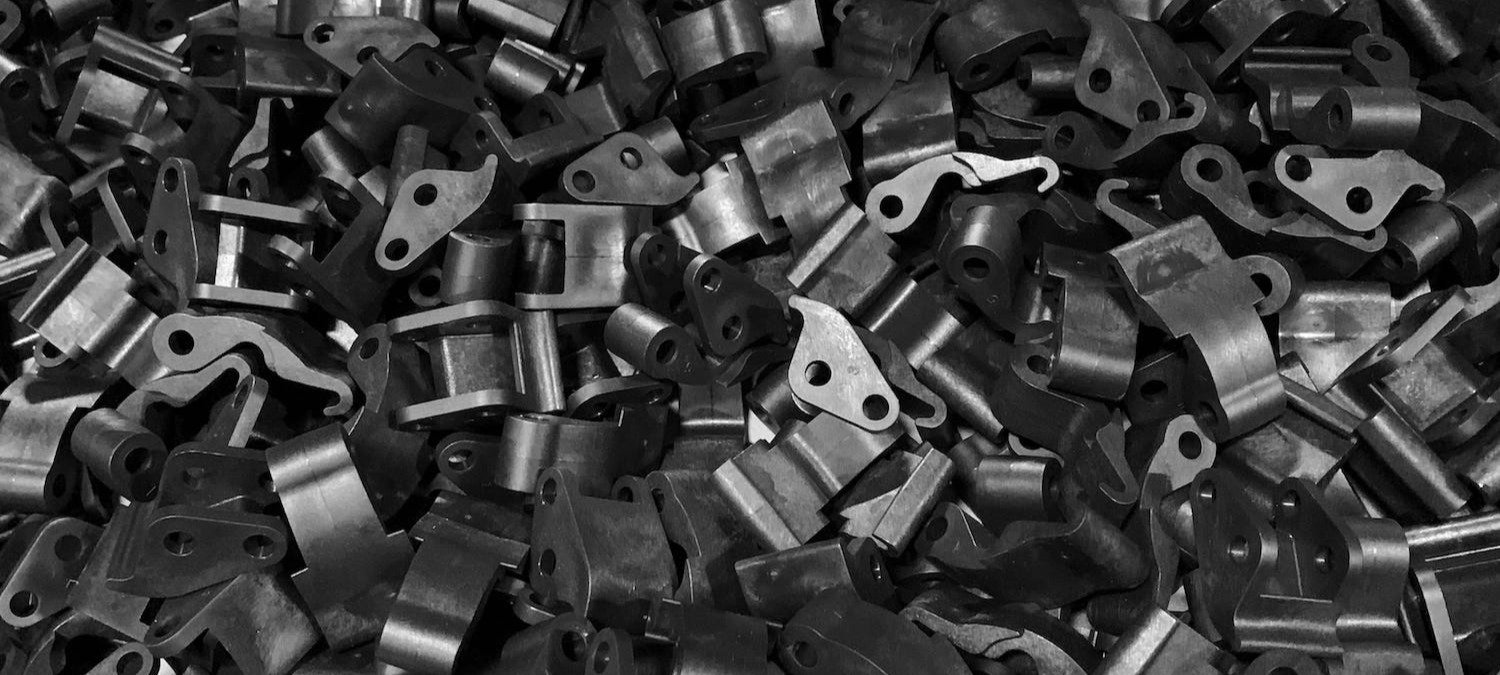The world of plastic injection molding is a fascinating one, churning out an incredible variety of parts that shape our everyday lives. But behind the scenes, a silent hero plays a crucial role: injection mold tooling. This blog dives into the world of injection mold tooling, exploring the materials, costs, and lifespan of these essential tools that breathe life into your plastic part designs.
What is Plastic Injection Molding Tooling?
Imagine a specialized mold that acts as a negative imprint of your desired plastic part. That's essentially what injection mold tooling is! These tools, typically crafted from steel, are the workhorses of the injection molding process. Molten plastic is injected under high pressure into the mold cavity, taking on the mold's shape and solidifying into the final part. Without this crucial tooling, replicating plastic parts consistently and efficiently wouldn't be possible.
The Right Metal for the Job: Exploring Tool Steel Options
Injection mold tooling shoulders a significant responsibility, so choosing the right metal is critical. Here's a breakdown of some popular contenders:
- H-13 Tool Steel: This versatile and cost-effective option is a popular choice for a wide range of applications. It offers a good balance between hardness, toughness, and polishability.
- P-20 Tool Steel: For projects requiring excellent machinability and a good balance of properties, P-20 tool steel is a solid choice. It's often used for prototypes or lower-volume production runs.
- Stainless Steel: When corrosion resistance is paramount, stainless steel steps up to the plate. Resins, such as PVC and acetal, produce corrosive gasses which can rust tooling so stainless steel is used to prevent the gasses from destroying the mold.
Why are these materials considered good choices?
Each metal brings its own strengths to the table. Tool steels provide the ideal balance of hardness – crucial for withstanding the immense pressure during molding – and toughness to resist wear and tear over countless cycles.
Ultimately, there's no single "one size fits all" answer. The ideal metal choice hinges on your project's specific needs. For high-volume production runs, a more wear-resistant tool steel like H-13 might be the preferred option. Conversely, intricate parts might necessitate a steel with superior machinability, like P-20. And of course, for parts that will encounter chemicals, stainless steel offers the ultimate protection with its superior corrosion resistance.
Understanding the Cost Factors of Injection Mold Tooling
The cost of injection mold tooling is a crucial consideration for any project. Here are the top 5 key factors that influence the price tag:- Materials: As discussed, the type of steel used plays a significant role. More exotic or wear-resistant steels will naturally cost more.
- Complexity: The intricacy of the mold design directly impacts cost. Molds with intricate features or multiple cavities require more machining time and expertise, driving up the price.
- Surface Finish: The desired surface finish of the final part can also influence cost. A high-gloss finish often requires additional polishing steps on the mold, increasing the price.
- Mold Size: Larger molds generally require more material and machining time, leading to higher costs.
- Number of Cavities: Molds can have multiple cavities to produce several parts per cycle. While this increases the initial cost, it can significantly reduce the cost per part in high-volume production runs.
For more information on what drives the cost of plastic injection molding projects, see our Complete Guide to Injection Molding Cost.
The Lifespan of Your Injection Molding Tool: A Balancing Act
Injection mold tooling is an investment, and you naturally want it to last as long as possible. The good news is that these tools can be reused for thousands, even millions of cycles, depending on several factors:
- Material Selection: Choosing the right tool steel for the expected production volume helps ensure a longer lifespan.
- Mold Maintenance: Proper care, including cleaning and lubrication, is critical for extending the tool's life.
- Part Complexity: Intricate parts can put more stress on the mold, potentially reducing its lifespan.
- Production Conditions: Running the molding process within recommended parameters minimizes wear and tear on the tool.
Extending the Life of Your Injection Mold Tooling
Prolonging the life of your tooling requires a proactive approach. Regular cleaning and lubrication, which fall under the umbrella of preventive maintenance, are essential for keeping your mold in top condition. Being vigilant about monitoring for wear and tear is also crucial. Early detection and repair of minor issues can prevent them from snowballing into more significant problems down the road. Finally, partnering with an experienced injection molding manufacturer offers a significant advantage. Their expertise in proper mold handling and operation will ensure your tooling is treated with the care it deserves, ultimately maximizing its lifespan and delivering consistent, high-quality parts for years to come.
In conclusion, injection mold tooling is the backbone of the plastic injection molding process. Understanding the materials used, the factors influencing cost, and the lifespan of these tools empowers you to make informed decisions for your project. By carefully considering these factors and partnering with an experienced injection molding company like Molding Dynamics, you can ensure that your tooling investment delivers high-quality parts consistently.
Ready to transform your innovative designs into reality? At Molding Dynamics, we offer comprehensive injection molding solutions, including expert guidance on tooling selection and design. Our team of specialists will work closely with you to understand your project needs and recommend the optimal tooling solution for your budget and production requirements. We utilize state-of-the-art equipment and rigorous quality control procedures to ensure that your injection mold tooling is built to last, delivering consistent, high-quality parts throughout its lifespan.
Contact Molding Dynamics today and let's discuss how we can bring your plastic injection molding project to life. We're here to guide you through every step of the process, from initial design consultation to tooling selection and production, ensuring your vision becomes a reality.






